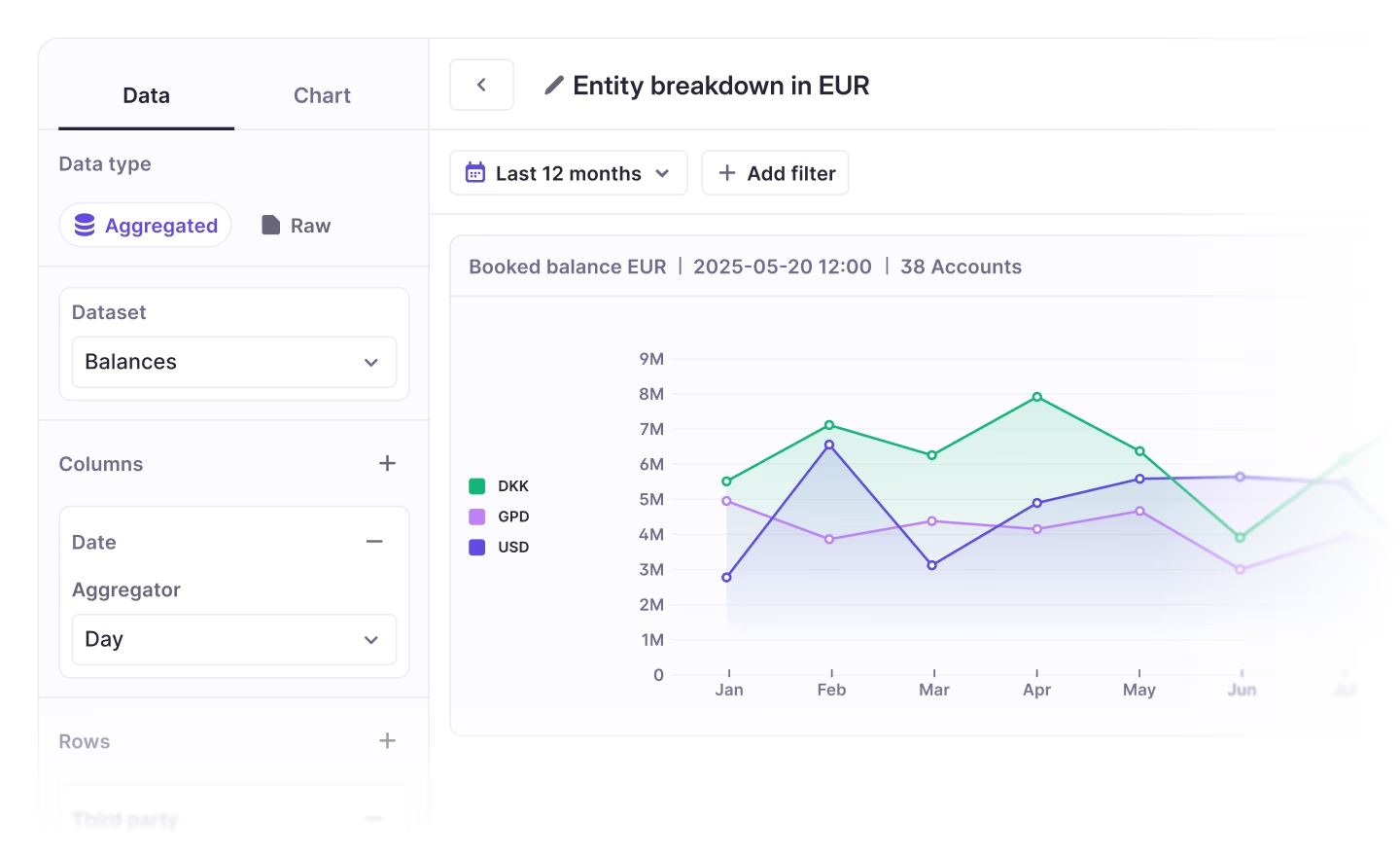What is working capital management?
Working capital management is about monitoring a company's assets and liabilities in order to ensure sufficient liquidity and the efficient use of capital.

Introduction to working capital management
Working capital management is a key sub-function of treasury management that refers to monitoring a company's assets and liabilities in order to ensure sufficient liquidity and the efficient use of capital. At a basic level, the goal is to make sure there’s enough money to meet short-term financial obligations such as unpaid taxes and short-term debt.
Alongside cash flow, working capital is a key financial metric used to illustrate a company's health. It is calculated by subtracting a company's current liabilities from its current assets, as listed on the company’s balance sheet. You typically incorporate cash, accounts receivable, and inventory as current assets and things like accounts payable, taxes, wages, and interest owed as current liabilities.
Positive working capital is generally a sign of financial health. It means the company is able to invest in growth after meeting its short-term obligations and should be better prepared to withstand any unforeseen financial circumstances.
Objectives of working capital management
Liquidity
A primary goal of working capital management is to ensure sufficient levels of liquidity. This means planning ahead for future needs and ensuring the company has the necessary liquidity to meet its obligations, keep its operations running, and avoid late payments. Failing to control working capital, and hence failing to manage a company's liquidity, is a major cause of businesses going under.
Profitability
Another key goal of working capital management is to maximize profitability. Money tied up in working capital, such as when funds are held as cash in a bank account, tends to earn little or no return – especially in an era of low interest rates. A healthy amount of working capital benefits a company by providing liquidity, but excessive levels of working capital can be inefficient. Those funds could instead be invested on a longer term in an effort to generate a higher return. When a company maintains an inefficient level of working capital it is known as overcapitalization.
Optimizing your working capital to strike the right balance between liquidity and profitability for a company's situation is a key aspect of working capital management.
Assets and liabilities
Calculating a company's working capital involves evaluating its assets and liabilities. The cash that a company holds in its bank accounts is just one of several assets to consider alongside other highly liquid assets that can be readily converted to cash. Referred to as cash equivalents, these assets include money owed by customers (accounts receivable) and any investments such as treasury bills and money market funds.
Assets to consider:
- Cash balances in bank accounts
- Physical cash (if applicable)
- Cash in savings accounts and certificates of deposit
- Accounts receivable
- Short-term financial instruments (treasury bills, money market funds, marketable securities)
When assessing a company's liabilities, the focus is on financial obligations with a relatively short time horizon. These include upcoming salary payments, money owed to suppliers (accounts payable), any credit card repayments or credit lines, and any expenses accrued that have not been invoiced.
Liabilities to consider:
- Salaries payable
- Accounts payable
- Credit card debt and other short-term credit lines
- The portion of long-term debt expected to be repaid
- Accrued expenses
Working capital and liquidity ratios
Companies typically optimize their working capital in line with a desired working capital or liquidity ratio, such as the ‘current’ or ‘quick’ ratio. These ratios provide a snapshot of your working capital situation by dividing your current assets – including cash and cash equivalents – by your current liabilities.
Current ratio
The current ratio, also known as the working capital ratio, is calculated by dividing your current assets by your current liabilities. It takes into account all assets that can be made liquid within one year, taking a longer term view of liquidity compared to the quick ratio. It measures your business’s ability to meet its liabilities when they come due.
How it’s calculated: Current Assets (Cash + Cash Equivalents + Accounts Receivable + Inventory) / Current Liabilities
Quick ratio
The quick ratio, or acid-test ratio, tells you if your company has enough money on hand to pay your bills and staff. It includes all assets that can be made liquid within ninety days, therefore excluding inventory, and excludes long-term debts from your current liabilities. Although not widely used by financial institutions, the quick ratio can be useful in understanding whether a company can afford a large, sudden expenditure.
How it’s calculated: Current Assets (Cash + Cash Equivalents + Accounts Receivable) / Current Liabilities
Cash operating cycle
A company's cash operating cycle, sometimes referred to as the working capital or cash conversion cycle, is the amount of time that passes between paying suppliers and receiving cash from sales. A key goal of working capital management is to minimize the length of this cycle as much as possible. A long cash operating cycle means that a company has a higher level of resources tied up in working capital.
The length of a cash operating cycle depends to some extent on the nature of the business. These cycles can be very long in the construction industry, for instance, because projects tend to have long timelines with work continuously ongoing.
Working capital management vs cash management
Cash management refers specifically to overseeing the inflow and outflow of cash in your business. Cash flow is, alongside working capital, a key metric in describing the financial health of a business. It measures how much money the company generates or consumes in a given period.
Working capital, by contrast, is the difference between the company's assets and liabilities. Managing working capital revolves around optimizing the balance of assets and liabilities to help the company operate as efficiently as possible in line with a desired working capital ratio.
A company’s cash flow obviously affects its amount of working capital. If revenue declines and the company experiences negative cash flow as a result, it will draw down its working capital.
You can unsubscribe anytime.
Further reading
See Atlar in action.
Enter your work email to watch a live product demo.


